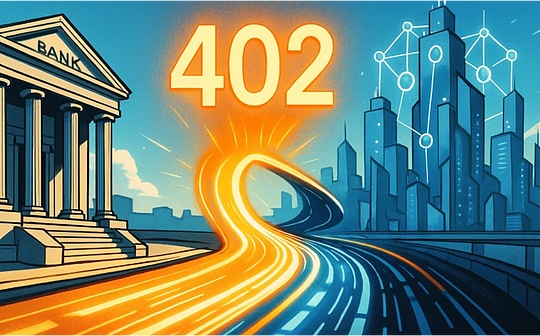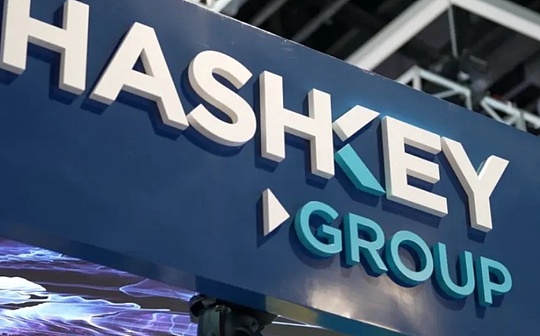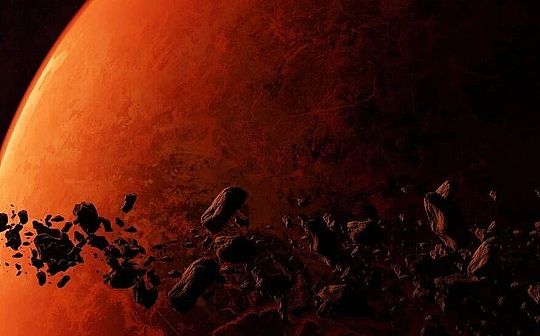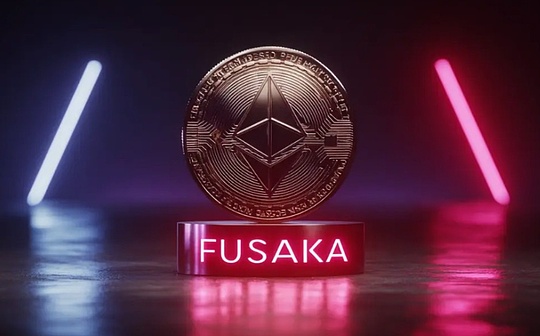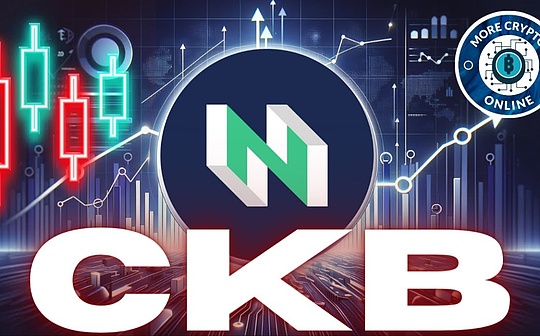
Author: linabell, chainfeeds
With the landing of ETF, the BRC-20 ecological explosion and the blessing of a half-narrative, the market’s attention seems to have focused on the Bitcoin ecosystem again.In this context, CKB, as an old -fashioned public chain ecological project, has also frequently moved in the near future. It was announced that the main network positioning was adjusted to Bitcoin Layer2 and launched a layer of asset agreement RGB ++.With the development momentum of Bitcoin Layer2, coupled with its own UTXO + POW orthodox “BUFF”, CKB quickly became a hot spot for community discussions.
However, before we explore the concept of RGB ++, why the CKB team chooses the RGB agreement and how they plan the development ideas of Bitcoin Layer2, we need to return to the past to learn more about the history, background and original intention of CKB.
Path of birth
At the beginning of 2018, when the market attention point was concentrated in the Ethereum ecology, CKB was officially launched.In July of the same year, CKB completed $ 28 million in financing, and many well -known investment institutions such as Polychain Capital, Sequoia China, Wanxiang Block, BlockChain Capital participated.Subsequently, on October 24, 2019, CKB completed a $ 67.2 million in excess fundraising at CoinList.On November 16, 2019, CKB’s main network “LINA” was launched.
The CKB team’s background is called the star team.Olaf, the founder of Polychain Capital, also said in an interview that he is very optimistic about the CKB team background.
-
Chief Architect Jan Xie: It has long contributed to the development of the Ethereum client Ruby-Ethereum and Pyethereum. It has also cooperated with the founder of the Taifang founder Vitalik Buterin to develop CASPER consensus and sharding technology.In addition, he also created Cryptape, a company engaged in the development and consensus algorithm research on the underlying blockchain platform.
-
Lianchuang KEVIN WANG: I have worked in corporate data solutions in IBM Silicon Valley Labs, and jointly established Launch School, an online school for software engineers.In addition, Kevin Wang is still intended to drive centralized solution infrastructure Khalani.(Khalani is a multifunctional “Collective Solver”, which can be seamlessly integrated into various applications and ecosystems..
-
Lianchuang and COO Daniel LV: Ethereum wallet Imtoken Lianchuang, is also the former chief technical officer of the encrypted exchange.In addition, Daniel LV also organized 10 years of Ruby China community and jointly founded Ruby-China.org.
-
CEO Terry TAI: It was a core developer of the encrypted exchanges, and it was a linked of technology podcast Teahour.fm.
Interestingly, although the CKB founding team is closely related to the Ethereum community, they chose to inherit the Bitcoin UTXO + POW model in the construction structure of Layer1.This is because the team recognizes the limitations of Ethereum infrastructure.They realized that Ethereum’s structure limited the thorough reform of the entire system and could not fundamentally reconstruct and bold innovation.Therefore, the CKB team decided to embark on a different path from Ethereum and build a new blockchain.
On the other hand, the reason why the CKB team chooses to rebuild a public chain may be inspired from the name of NERVOS.The term NERVOS comes from “Nerve”, which also borrows the theory of evolution of Charles Darwin: “Only by adapting to and flexibly adjusted to the changing environment can surviveEssenceHowever, there is another saying about the source of NERVOS, because CKB’s Lianchuang is also a lover of e -sports and anime, and the “New Century Evangelion”, the “UN Special Service”, is exactly the “NERV”.
In order to accelerate ecological progress, CKB has been focusing on development tools since 2020, and has launched a series of tools, including JavaScript/TypeScript framework Lumos, Polyjuice, which allows the Ethereum compatible layer to use the account model on CKB, connects Ethereum and CKB and CKB.Cross -chain bridge Force Bridge and DAPP development kit Tippy and so on.These tools have greatly reduced the threshold for development and applications.Based on these tools, CKB ecology has launched 127 projects, covering different tracks such as DID, wallets and inscriptions.
“What is the innovation of the CKB architecture?
In the context of the community’s general concern to TPS and POS, CKB chose a technical route that is completely different from the mainstream.They insist that they must not compromise on anti -review and no license issues.Therefore, selecting L1 performance to maintain sufficient decentralization, and use improved POW and simple hash functions to ensure the security of the network and no license.
Hierarchical concept
The reason for choosing a layered architecture is based on the team’s reflection on the Internet operation mode.The Internet has built a relatively stable trust network through a layered and tone architecture, but its credibility level is limited and lacks the inherent support of self -guarantee protocols.CKB’s ideal encrypted economic network infrastructure should also use a layered and tactile architecture.This means that a set of protocols define the network, but also provide native support for the self -guarantee protocol.Therefore, the team decides to build a security and scalable layered network. Among them, Layer1 focuses on providing security and decentralization, and Layer2 uses the security of Layer1 to provide unlimited expansion.
As Layer1, CKB is called “Common Knowledge Base”.”Common Knowledge” is defined as a common and widely -known knowledge. Everyone or almost everyone knows, and everyone knows.In the blockchain language situation, “common knowledge” refers to the state that is verified by global consensus and accepted by everyone in the network. This attribute can also use cryptocurrencies stored on the public chain as currency.NERVOS CKB aims to store common knowledge of all types, not limited to currency.For example, it can store user -defined encryption assets, including FT, NFT, etc.
Layer 2 protocol can use CKB to ensure security and provide unlimited expansion.The layered architecture proposed by CKB was also recognized by Ethereum. Ethereum has abandoned the previous execution of the execution shard research since 2019. It has changed to expansion with Layer 2 as the core, which has continued to this day.
POW mechanism guarantee decentralization
CKB firmly believes that Layer1 is the cornerstone of the encryption economy, so it must be a network without permission.In contrast, POS decides to distribute proportion of blocks based on pledge weights, which has led to conflict with decentralization and neutral targets.In contrast, POW does not need to be licensed at all. Users only need to buy mining machines and electricity to participate in blocks.In addition, in terms of security, it is difficult to fake or reconstruct a POW chain because it needs to re -calculate the computing power of each block.And Vitalik has also created the concept of “Weak Subjectivity” to explain that POS’s security is not lower than POW.
Therefore, the CKB team believes that although POS is indeed better than POW in performance, if you want Layer1 to be as decentralized and secure as possible, POW is more suitable than POS.
Cell model realizes scalability
With the rise of the Bitcoin ecosystem, the debate between the account model and the UTXO model once again attracted attention.In the early days, these two models were interpreted around assets, but over time, UTXO still regards the assets as the core (point -to -point), and the account model has evolved into a contract service, and the user’s assets are custody to smart contracts.And interact with it.This has led to the asset security level issued on the UTXO chain higher than that of ERC-20 assets issued on Ethereum.In addition to security, the UTXO model has better privacy. Each transaction will be replaced with addresses, and naturally supports parallel trading processing.The most important thing is that unlike the account model on the chain at the same time, the UTXO model puts the computing process under the chain, and only verification on the chain, thereby simplifying the implementation of the application, which means that it does not have to be considered on the chain.Optimization problem.
CKB not only inherits the idea of Bitcoin architecture, but also abstracts the UTXO model. The Cell model is created. While retaining the consistency and simplicity of Bitcoin, it has the ability to support smart contracts.Specifically, Cell has abstracted the NVALUE fields representing the token value in UTXO and is divided into two fields: CaPaCity and Data. Among them, the data preservation state can store any data.At the same time, Cell’s data structure also contains two fields of LockScript and TypeScript. The former mainly reflects ownership, while the latter can customize many rich functions.
In summary, the Cell model is a more common UTXO model that allows CKB to have a smart contract function similar to Ethereum.But unlike other smart contracts, CKB uses an economic model for common knowledge storage, rather than paying for payment for decentralized calculations.
High -level “abstract”
The concept of “abstraction” is no stranger to encrypted users. It refers to removing the particularity of the system, creating universality, and allowing the system to apply to a broader scenario.The development of Bitcoin to Ethereum is actually an abstract process.Bitcoin lacks programming and is difficult to build applications.Ethereum introduces a virtual machine and operating environment, providing a platform for building various types of applications.Ethereum is also constantly abstracted in its development process, whether it is Vitalik’s “account abstraction” repeatedly mentioned, or increasing pre -compiled “cryptography abstraction”.
Just like Ethereum is the abstraction of Bitcoin, CKB is also abstracted to Ethereum to some extent, providing more free performance for smart contract developers.
1)Account abstraction
CKB realizes account abstraction through the Cell model.For example, the Nervos ecological wallet Unipass has created a mailbox -based identity authentication system.Users can log in through mailboxes and passwords, similar to traditional Internet accounts.Decentralized identity service provider D.id team developed decentralized domain name protocol. Bit also uses the characteristics of NERVOS abstract accounts, so that Internet users, Ethereum users, and EOS users can directly operate the application, not limited to CKBuser.
2) Cryptography abstract
The core of cryptographic abstraction is efficient virtual machine.CKB uses CKB-VM. With the characteristics of the RISC-V instruction set, CKB-VM enables developers to use language such as C and Rust to implement cryptographic algorithms.For example, the Joyid wallet based on CKB makes full use of the advantages of NERVOS CKB custom cryptography, realizing that there is no need to password and notes, and directly use biometric technologies such as fingerprints to create wallets and confirmation transactions.
3) Run abstraction
The goal of CKB is to build a higher level of abstraction to improve performance and throughput.With the improvement of the abstract level, the Nervos network can migrate more work outside the chain or Layer 2.For example, although Xbox is an abstract universal platform, there are still some restrictions, such as cannot change hardware.PC allows users to replace hardware such as graphics cards, CPUs, memory and hard disks.Therefore, PC is a more abstract system.The goal of CKB is to change from Xbox to PC to meet more needs and provide developers with more convenience.
CKB Economic Model Analysis: Mining Reward and Inflation Mechanism
CKB native currency is CKB (Common Knowledge Byte), which represents the global state of the blockchain that holders can occupy.For example, if you have 1,000 CKB, you can create a Cell with a space of 1000 byte, and you can use these 1,000 bytes to store assets, application status or other types of data.
CKB’s economic model is very unique. In addition to halving mining rewards (similar to Bitcoin) every 4 years, it also introduced inflation design similar to mainstream POS coins, adding 1.344 billion per year.As of now, according to statistics from CKBDApps, the number of CKB issuance is 44.379 billion, of which 43.69 billion pieces are circulating.The specific design is as follows:
>
1) Genesis distribution:
The CCP of the Creative Block released 33.6 billion pieces.In order to pay tribute to Satoshi Nakamoto, 8.4 billion CKBs were stored in the address of Satoshi Nakamoto.The remaining 25.2 billion CKB was assigned to institutional investors, ecological funds, development teams and public investors, etc., and has all been unlocked.
2) First -level distribution:
The total number of first -level distribution was 33.6 billion.Similar to Bitcoin, it is halved every four years until all levels of issuance are mining.At present, CKB has been halved for the first time in November 2023, and the circulation has dropped to 2.1 billion CKB per year.The second decrease is expected to be carried out in November 2027, and the circulation will be reduced to 1.05 billion CKB per year.All CKB issued by the first level will be rewarded to the miners.
>
Specific allocation:
-
21.5% is used to disclose token sales, and all unlocked when the main network starts
-
17% are allocated to the ecosystem fund, the main network is unlocked by 3%, and the remaining will be unlocked within 3 years
-
15% are allocated to the NERVOS team, the four -year belonging period, the main network is unlocked by 1/3
-
14% used in private placement in 2018, locking for two years
-
5% are allocated to the founding partners, locking in three years, and will not circulate on the main network
-
2% for the foundation reserve, which has been unlocked in July 2020. It will not circulate on the main network
-
0.5% is used for testing network incentives, and provides rewards for testing network participants through mining competitions and vulnerabilities bounty plans
-
25% of the remaining 25% have been destroyed
>
3) Secondary distribution
In order to ensure that the source of income from the miners is not affected by halving and the volume of transactions on the chain, CKB introduces the concept of “secondary distribution” and is fixedly issued by 1.344 billion CKB each year.The specific distribution method depends on the way CKB on the Internet:
-
Miners: directly proportional to the status on the chain
-
NERVOSDAO: It is directly proportional to the proportion of the total distribution in the locking CKB in NERVOSDAO
-
State Treasury: It is directly proportional to the proportion of CKB in circulation. The current governance mechanism has not yet been improved, and this part is directly destroyed.
The secondary distribution can be regarded as a “inflation tax” mechanism.That is, if users need to store data or status on CKB, they need to pay a certain amount of CKB as “status rent” to the miners.If you no longer need to be stored, you can unlock CKB and store in NERVOSDAO.And those holding users who do not have storage demand can directly deposit their CKB into Nervosdao and receive subsidies to avoid the token value diluted by secondary issuance.
According to CKB browser data, 11.4% of the second -level issuance tokens were used for mining rewards, 19.1% were used for locking subsidies, and 69.5% were allocated to the Treasury Fund and destroyed.
>
Network computing
CKB mining began on May 18, 2019, using the Eaglesong hash algorithm.After March 2020, it gradually shifted from CPU, GPU, FPGA to ASIC mining machines. Currently, it supports ASIC mining such as Antminer K7 and Goldshell CK6 (GPU and FPGA mining machines are not profitable).
At present, the computing power of network mining is 240.06 pH/s, and the mining difficulty is 2.31 EH.At present, CKB mining pools include F2POOL, POOLIN, 2Miners, etc.
>
Continuous controversy, how do you think of the new idea of Bitcoin Layer2?
On February 13, CKB Lianchuang CIPHER proposed the RGB expansion agreement: RGB ++. This move affects CKB’s secondary market price to a certain extent and triggered orthodox discussions on Bitcoin Layer2.Some users believe that compared to the EVM compatible faction, RGB ++ inherits the orthodoxy of Bitcoin UTXO, and the team deeply cultivates the Bitcoin ecosystem.The extension and innovation of Bitcoin thought.However, there are some views that CKB is too much positioning.From 2019 to 2020 cooperation with Huobi, to the game direction from 2020 to 2022, no substantial progress has been made.Therefore, there may be suspicion of speculation in the direction of Layer2 this time.In addition, for the meaning of the RGB ++ name, the native developers of Bitcoin also expressed disagreement and believed that the meaning of “Better than RGB”.At present, CKB has launched the RGB ++ roadmap. How will the future performance may only be given the answer after the test of time.
Since the beginning of 2024, competition between Bitcoin Layer2 solutions has intensified.However, no matter which solution is adopted, they have promoted the sustainable development and landing of Bitcoin ecosystem to a certain extent. This competition may stimulate more creative and solutions.Fortunately, in this process, CKB seems to have always adhered to the original intention, insisting on the same structure with Bitcoin, and further in shortcutting.




